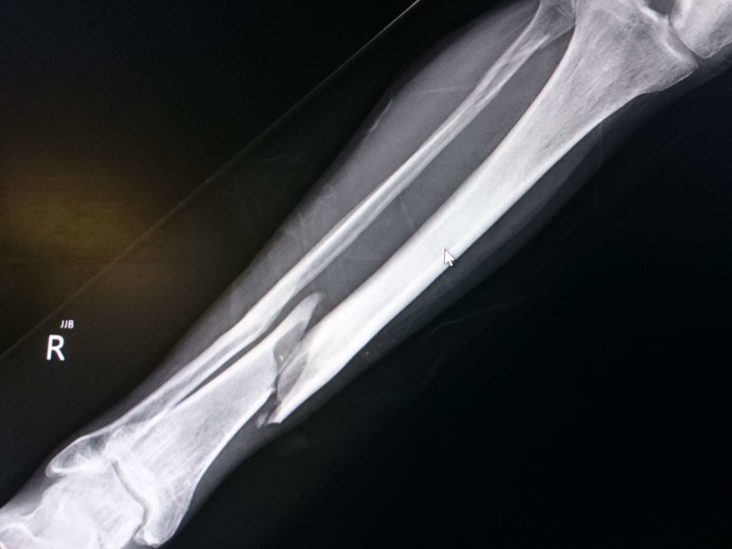Fracture
Fractures: A Comprehensive Guide to Types, Causes, and Recovery
A fracture is a break, usually in a bone. If the broken bone punctures the skin, it is called an open or compound fracture. Fractures commonly happen because of car accidents, falls, or sports injuries. Other causes are low bone density and osteoporosis, which cause weakening of the bones.
The word “break” is commonly used by lay (non-professional) people.
Among doctors, especially bone specialists, such as orthopedic surgeons, “break” is a much less common term when talking about bones.
Compound fractures are generally more serious than simple fractures, because, by definition, they are infected.

A crack (not only a break) in the bone is also known as a fracture. Fractures can occur in any bone in the body.
There are several different ways in which a bone can fracture; for example, a break to the bone that does not damage surrounding tissue or tear through the skin is known as a closed fracture.
On the other hand, one that damages surrounding skin and penetrates the skin is known as a compound fracture or an open fracture.
On the other hand, one that damages surrounding skin and penetrates the skin is known as a compound fracture or an open fracture. Compound fractures are generally more serious than simple fractures, because, by definition, they are infected.
Most human bones are surprisingly strong and can generally stand up to fairly strong impacts or forces. However, if that force is too powerful, or there is something wrong with the bone, it can fracture.
The older we get, the less force our bones can withstand. Because children’s bones are more elastic, when they do have fractures they tend to be different. Children also have growth plates at the end of their bones – areas of growing bone – which may sometimes be damaged.
Types of Fracture
There is a range of fracture types, including:
- Avulsion fracture – a muscle or ligament pulls on the bone, fracturing it.
- Comminuted fracture – the bone is shattered into many pieces.
- Compression (crush) fracture – generally occurs in the spongy bone in the spine. For example, the front portion of a vertebra in the spine may collapse due to osteoporosis.
- Fracture dislocation – a joint becomes dislocated, and one of the bones of the joint has a fracture.
- Greenstick fracture – the bone partly fractures on one side, but does not break completely because the rest of the bone can bend. This is more common among children, whose bones are softer and more elastic.
- Hairline fracture – a partial fracture of the bone. Sometimes this type of fracture is harder to detect with routine xrays.
- Impacted fracture – when the bone is fractured, one fragment of bone goes into another.
- Intraarticular fracture – where the break extends into the surface of a joint
- Longitudinal fracture – the break is along the length of the bone.
- Oblique fracture – a fracture that is diagonal to a bone’s long axis.
- Pathological fracture – when an underlying disease or condition has already weakened the bone, resulting in a fracture (bone fracture caused by an underlying disease/condition that weakened the bone).
- Spiral fracture – a fracture where at least one part of the bone has been twisted.
- Stress fracture – more common among athletes. A bone breaks because of repeated stresses and strains.
- Torus (buckle) fracture – bone deforms but does not crack. More common in children. It is painful but stable.
- Transverse fracture – a straight break right across a bone.
Symptoms of Fracture
The signs and symptoms of a fracture vary according to which bone is affected, the patient’s age and general health, as well as the severity of the injury.
- pain
- swelling
- bruising
- discolored skin around the affected area
- angulation – the affected area may be bent at an unusual angle
- the patient is unable to put weight on the injured area
- the patient cannot move the affected area
- the affected bone or joint may have a grating sensation
- if it is an open fracture, there may be bleeding
When a large bone is affected, such as the pelvis or femur:
- the sufferer may look pale and clammy
- there may be dizziness (feeling faint)
- feelings of sickness and nausea.
Treatment for Fracture
Immobilization – as soon as the bones are aligned they must stay aligned while they heal. This may include:
Plaster casts or plastic functional braces – these hold the bone in position until it has healed.
Metal plates and screws – current procedures may use minimally invasive techniques.
Intra-medullary nails – internal metal rods are placed down the center of long bones. Flexible wires may be used in children.
External fixators – these may be made of metal or carbon fiber; they have steel pins that go into the bone directly through the skin. They are a type of scaffolding outside the body.
Healing – if a broken bone has been aligned properly and kept immobile, the healing process is usually straightforward.
Physical therapy – after the bone has healed, it may be necessary to restore muscle strength as well as mobility to the affected area. If the fracture occurred near or through a joint, there is a risk of permanent stiffness or arthritis – the individual may not be able to bend that joint as well as before.
Surgery – if there was damage to the skin and soft tissue around the affected bone or joint, plastic surgery may be required.

